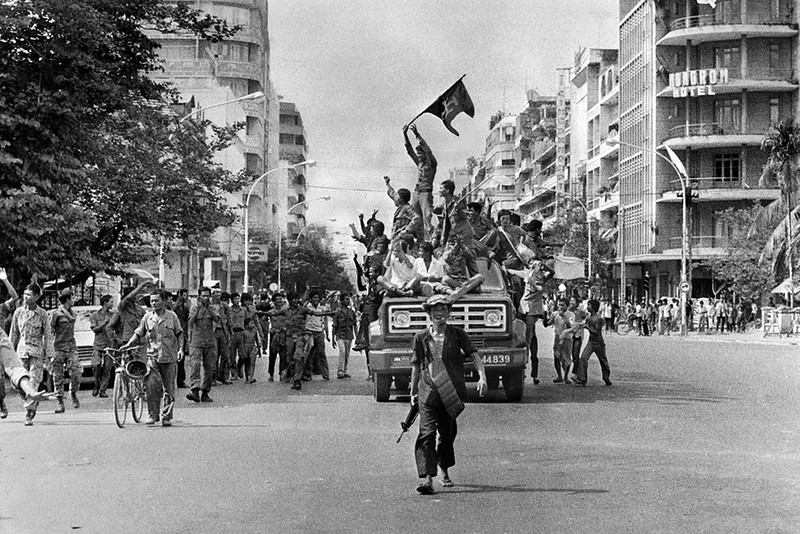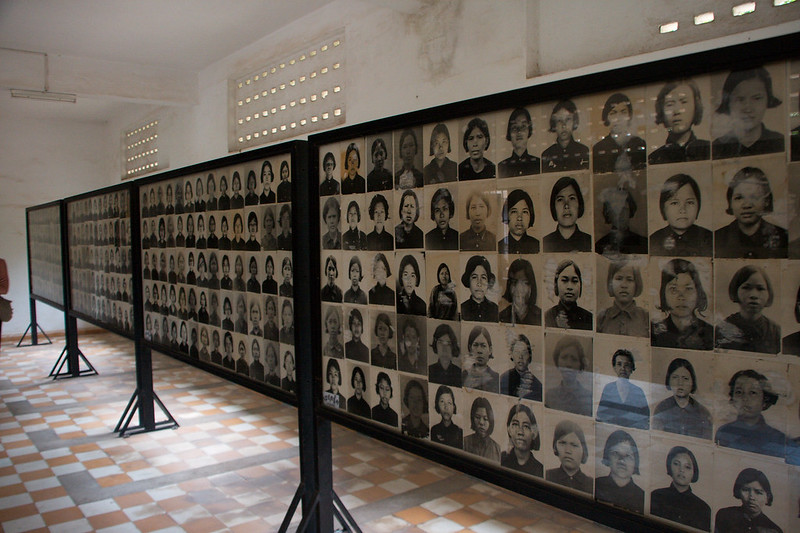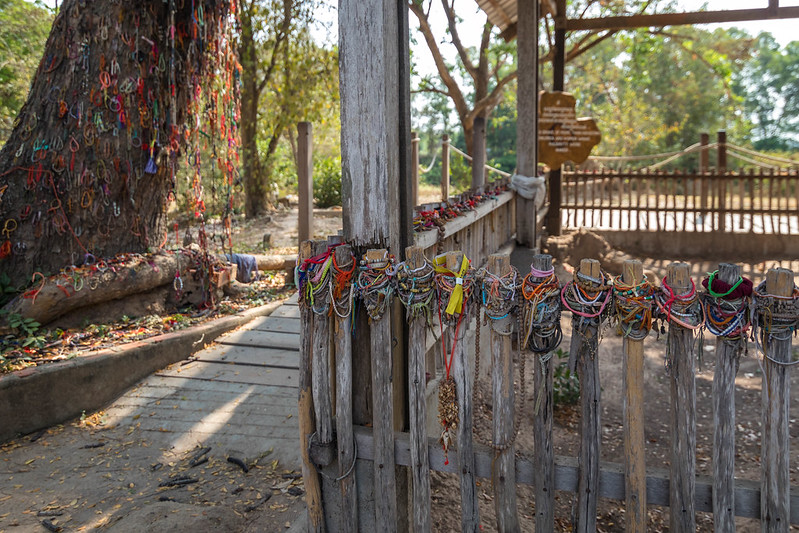The Khmer Rouge was a communist party that overthrew Cambodia from 1975 to 1979, lead by Pol Pot.
Their ideology was to be self sufficient and not influenced by the West. They wanted to live a primitive lifestyle.
The Khmer Rouge isolated the country from all foreign influences, closed down schools, hospitals and some factories, and abolished banking, currency and finances.

Khmer Rouge soldiers celebrate as they take of the capital, Phnom Penh.
People were given only basic education and anyone with higher education was seen as suspicious. They did not have advanced medicine because they refused to import Western medicines.
From 1975 to 1979 under the Khmer Rouge reign, it is estimated that 1.5 to 2 million people died. This was 25% of Cambodia's population at the time.
People died from torture, disease, being overworked, or they were killed for being perceived as enemies.

A bed inside S21, a high school turned into a prison where 20,000 people were held.
When the capital, Phnom Penh, was captured in 1975, residents were told to evacuate to the countryside which took the lives of thousands of children and elderly and sick people.
If residents refused to evacuate, they were killed and their homes were burned.
After arriving at the camps they were assigned, evacuees were forced to work long shifts to increase food production for Khmer Rouge soldiers without enough rest and food.

Photos of some of the victims of S21, Out of the 20,000 people held there, only 12 survived.
As a result, people were punished with death if they were found picking wild berries or fruit, or died from starvation, exhaustion, and disease.
In 1978, Vietnamese and other forces against the regime invaded Cambodia. By 1979, these forces capture the capital, Phnom Penh.
The Khmer Rouge retreated west where they continued to control areas near the border of Cambodia and Thailand for the next couple of years.

Part of the Killing Fields where many mass graves reside. Visitors place colorful bracelets out of respect and to honor victims.
The Khmer Rouge continued to be a threat to other government, continuing fighting and boycotting elections, but by 1999 all members had either been captured or surrendered.
Cambodians are still trying to recover from their traumas and fight for justice for their families, but many Khmer Rouge leaders have yet to be tried or were given sentences many do not agree with.
As a Cambodian person myself who has family that is still fighting the traumas of the Khmer Rouge, I find it very important for myself and others to remember and learn what our ancestors, friends, and family had to go through. As I was creating this project, I decided to do it in a long scrolling method to keep the information flowing, allowing people to read what happened in parts rather than skimming a big paragraph.
This was a big learning experience trying to space everything out so it scrolled and flowed nicely, but I enjoyed it a lot. One of my biggest challenges was, at first, just understanding where to put my content and how to arrange it so it all scrolls at the same pace while the sentences and pictures are all at different positions on the page. Also, I had a lot of photos I wanted to include but they were a bit graphic. In the end, I'm glad I was able to achieve generally what I imagined my project to be like when I was brainstorming, and that I can do it on a topic that is very personal and important to me.